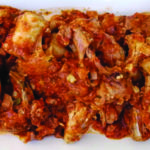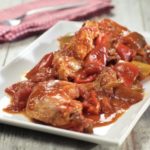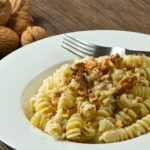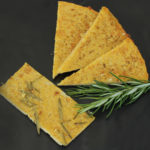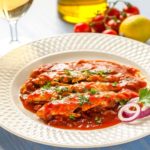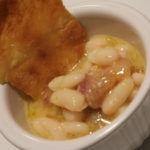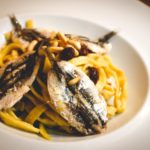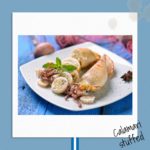ONION SOUP, THE NOBLEST OF ALL
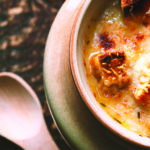
This onion soup sinks its roots deeply in Tuscan tradition, even though it only became famous when it was adopted by the French and became known as soup à l’oignon.
According to Tuscan tradition, the recipe includes the red Certaldo onion, whose reputation was so renown that it was quoted in Boccaccio’s Decameron.
Certaldo (link a Visit Tuscany) is not only Boccaccio’s birthplace, but also the location where this onion, which has been famous in Tuscany since the Middle Ages , grows. The father of the literary genre of the novella, which became the model for The Canterbury Tales, already celebrated this amazing vegetable in a novella where the main character was a monk called Friar Onion who narrates the abundance and fame of this vegetable. This red onion was celebrated later by Caterina de’ Medici, who exported the Tuscan onion soup to France with her Italian cooks.
Certaldo, which you might be familiar with, or may have heard of, is a town and comune in Val d’Elsa, in the Metropolitan City of Florence. This area grows an abundance of onions, more so than all of Tuscany, a food that was greatly influenced by those Friars, hungry men with a good appetite.
This onion is so important to this small town that it was even added to the town’s emblem in the 12th century – a red and white shield with an onion in the centre, and the motto “By nature I am both strong and sweet/ and am appreciated by both the rich and the workers”.
Every year this onion is celebrated in many country fairs in Certaldo, especially at the end of August, where I had the opportunity to eat the famous soup, made according to the simple Tuscan recipe.
Going back to the woman who contributed to making this very rustic recipe so famous, Caterina de Medici probably ate this soup with other ingredients that were very popular in the cuisine of Renaissance courts, which would likely be quite hard to accept for contemporary palates. While the “workers” probably ate the soup as it was cooked in the following recipe, the cooks of “the rich” enhanced it by adding almonds, sugar, verjuice (a highly acidic juice made by pressing unripe grapes used since the Middle Ages all over Western Europe), cinnamon and sugar, all remarkably expensive ingredients at the time.
Prep Time: 20 minutes | Cooking Time: 1 hour + 15 minutes | Total Time: 1 hour + 30 minutes | Yield: Makes 4 servings.
Ingredients
- 4 large onions, red if possible, finely sliced (a mandolin would be perfect)
- 5 tbsps. olive oil
- 1 litre (4 cups) water or broth (either beef, chicken, or vegetable)
- 8 tbsps. fresh pecorino cheese, grated
- 1 cup dry white wine
- 4 slices of Tuscan bread, possibly day-old, grilled
Instructions
In an earthenware or a cast iron saucepan, heat the olive oil and add the onions. Stir frequently to prevent burning, sauté until they become golden; this will take approximately 30 minutes. Then add the wine and simmer until it has evaporated by half, about 3-5 minutes. Add the stock and simmer for 40 minutes. If you like it thicker, add 1 tablespoon of flour before adding the broth and dissolve it well.
Arrange the bread slices in each bowl, ladle the soup on the bread, and sprinkle with the pecorino cheese.
TIP: if you want to make it more sophisticated, pre-heat the oven and pour the soup in 4 ovenproof dishes. Place the bread slices on top of the soup, instead of pecorino cheese, sprinkle the bread with gruyere cheese and place under the grill until the cheese melts to a crisp golden brown (about 3 minutes).
